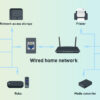Lifestyle
How to Track Sleep
Learn how to effectively track your sleep with this comprehensive step-by-step guide. Discover methods, tools, and tips to improve your sleep quality.
Understanding and improving your sleep is crucial for overall well-being. Tracking your sleep patterns can provide valuable insights into your sleep quality and help identify areas for improvement. This guide offers a detailed approach to tracking sleep, from manual methods to advanced wearable devices.
Step 1: Understand the Importance of Sleep Tracking
Before diving into tracking methods, it’s essential to recognize why sleep tracking matters. Monitoring your sleep can help identify issues like insomnia, sleep apnea, or irregular sleep patterns. It also aids in understanding how lifestyle factors such as diet, exercise, and stress affect your sleep.
Step 2: Choose a Sleep Tracking Method
There are various ways to track your sleep, each with its advantages:
2.1 Manual Sleep Diary
A sleep diary involves recording your sleep patterns manually. This method can help identify habits affecting your sleep. Here’s how to maintain a sleep diary:
- Record Sleep Times: Note the time you go to bed and wake up.
- Log Wake Times: Include any instances of waking up during the night.
- Note Sleep Quality: Rate your sleep quality each morning.
- Track Lifestyle Factors: Record caffeine intake, exercise, and stress levels.
This method is cost-effective and doesn’t require special equipment. However, it relies on self-reporting, which can be subjective.
2.2 Smartphone Apps
Several smartphone applications can track your sleep using built-in sensors:
- Sleep Cycle: Analyzes sleep stages and provides a smart alarm to wake you during light sleep.
- Pillow: Offers detailed sleep stage analysis and integrates with Apple Health.
- SleepWatch: Provides personalized insights and tracks sleep trends over time.
These apps are convenient and often free or low-cost. However, their accuracy may vary based on the phone’s placement and sensors.
2.3 Wearable Devices
Wearables offer more precise sleep tracking by monitoring physiological data:
- Oura Ring: Provides in-depth sleep analysis, including heart rate variability and body temperature.
- Fitbit Sense 2: Tracks sleep stages and offers personalized sleep coaching.
- Apple Watch Series 9: Monitors sleep patterns and integrates with the Apple Health ecosystem.
Wearables offer continuous monitoring and detailed insights. However, they can be expensive and may cause discomfort for some users.
Step 3: Implement Consistent Tracking
Consistency is key to obtaining accurate sleep data:
- Set a Regular Sleep Schedule: Go to bed and wake up at the same time every day.
- Use the Chosen Tracking Method Daily: Whether it’s a diary, app, or wearable, track your sleep consistently.
- Avoid Disruptions: Minimize factors that can interfere with sleep, such as noise and light.
Consistent tracking helps identify patterns and correlations in your sleep data.
Step 4: Analyze Sleep Data
Regularly reviewing your sleep data can provide insights:
- Identify Patterns: Look for consistent trends in sleep duration and quality.
- Assess Sleep Stages: Evaluate the amount of time spent in light, deep, and REM sleep.
- Correlate with Lifestyle Factors: Determine how factors like diet, exercise, and stress affect your sleep.
Analyzing this data can help pinpoint areas for improvement and inform lifestyle changes.
Step 5: Make Informed Adjustments
Based on your sleep data, consider making adjustments to improve sleep quality:
- Adjust Sleep Environment: Optimize your bedroom for sleep by reducing noise and light.
- Modify Lifestyle Habits: Implement changes such as reducing caffeine intake or increasing physical activity.
- Consult a Professional: If sleep issues persist, consider seeking advice from a healthcare provider or sleep specialist.
Making informed adjustments can lead to improved sleep quality and overall health.
Step 6: Monitor Progress Over Time
Continuously tracking and analyzing your sleep data allows you to:
- Evaluate the Effectiveness of Changes: Determine if adjustments lead to improvements in sleep quality.
- Identify Long-Term Trends: Observe how sleep patterns evolve over time.
- Maintain Motivation: Seeing positive changes can encourage continued efforts to improve sleep.
Monitoring progress helps ensure sustained improvements in sleep health.
Final Thoughts
Tracking your sleep is a valuable tool in understanding and improving your sleep patterns. By selecting an appropriate tracking method, consistently monitoring your sleep, analyzing the data, and making informed adjustments, you can enhance your sleep quality and overall well-being.
Remember, the goal is not just to collect data but to use it to make meaningful changes that lead to better sleep health.

















